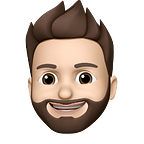5 lessons from Ogilvy on Advertising
3 min readJan 26, 2021
David Ogilvy is a hero to any advertising professional.
He started Ogilvy with $6,000. The ad agency now makes $388 million annually from its operations in more than 83 counties.
I was introduced to Ogilvy when I came across the famous Rolls Royce ad. The sheer simplicity of the copy to communicate everything important to a Rolls Royce makes it a brilliant ad.
Last week I was able to indulge myself in one of his books — Ogilvy on Advertising.
.
.
Trying my best to share the Top 5 takeaways from his book:
- Do your Homework
Spend time to understand the product. There is no substitute to this.
David used to interview engineers, product managers and consumers to come up with facts about the product he could use in the advertising. The Rolls Royce ad above came to life after he had spent 3 weeks reading about the car. - Decide on a Positioning & Brand Image
- Positioning: What the product does; Who is it for? Eg: David positioned Dove as a toilet bar for women. He could have easily positioned this as a detergent soap for men with dirty hands. The positioning made all the difference and made Dove crack a Big idea (point 3).
- Brand Image: Fix on a personality for the brand. Who would it be if it were a person? This determines the style of your advertising, packaging, media choices etc. Every campaigns adds to the brand image, consistently projecting the same image year on year. Eg: Marlboro Man vs Camel / Jack Daniels vs Grey Goose. - Will the idea work for 30 years?: Recognise the big idea
- Did it make me gasp when I saw it?
- Do I wish I had thought of it myself?
- If it unique? Has it ever been done before?
- Does it fit strategy to perfection?
- Could it be used for 30 years? Is it timeless?
Eg: The rugged and macho cowboy by Marlboro was so powerful it ran for almost 50 years. The Marlboro man could easily exist in 1950’s and the 1990's. - Get personal
Get personally involved. Use the product yourself — everyday. Talk to consumers. Buy the client’s stocks. Know what’s happening inside and outside the organization. - Goal is to make sure it sells
- Does this make you want to buy the product?
- Does this convey the benefits?
Ultimate goal of advertising is to sell, not win creative appreciation. (Mr Whipple is a classic example of a poor creative that sells. The creative was on air for more than 20 years! Luke Sullivan wrote an entire book on this)
Additional tips:
- Use name of the brand within 10 seconds; In the crowded ad space, it is important for your brand name to be registered. Viewers often remember the commercial but forget name of the product.
- Show the product. Ads which end up showing the packaging are proven to be more effective than those which don’t.
- Open with fire. GRAB ATTENTION in the first frame. Show them something viewers haven’t seen before!
- Use sounds. TV sets might be playing passively in the background, use sounds to intrigue viewers. Eg — Sizzle sounds work well
